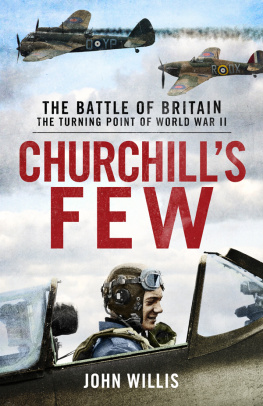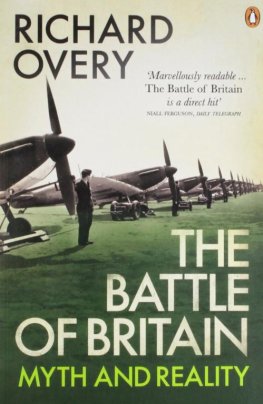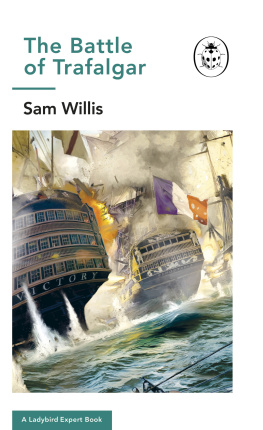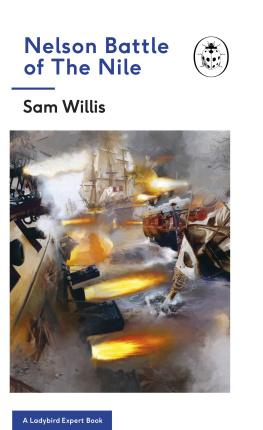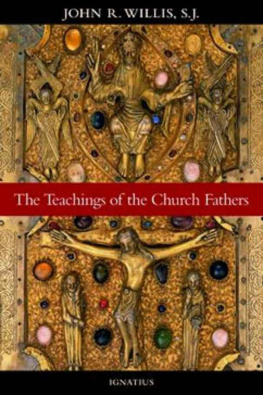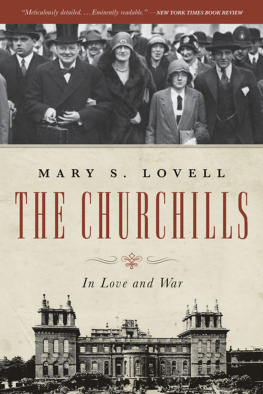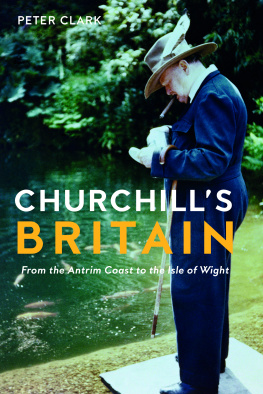John Willis - Churchills Few: The Battle of Britain
Here you can read online John Willis - Churchills Few: The Battle of Britain full text of the book (entire story) in english for free. Download pdf and epub, get meaning, cover and reviews about this ebook. year: 1985, publisher: Mensch Publishing, genre: Non-fiction. Description of the work, (preface) as well as reviews are available. Best literature library LitArk.com created for fans of good reading and offers a wide selection of genres:
Romance novel
Science fiction
Adventure
Detective
Science
History
Home and family
Prose
Art
Politics
Computer
Non-fiction
Religion
Business
Children
Humor
Choose a favorite category and find really read worthwhile books. Enjoy immersion in the world of imagination, feel the emotions of the characters or learn something new for yourself, make an fascinating discovery.
- Book:Churchills Few: The Battle of Britain
- Author:
- Publisher:Mensch Publishing
- Genre:
- Year:1985
- Rating:3 / 5
- Favourites:Add to favourites
- Your mark:
- 60
- 1
- 2
- 3
- 4
- 5
Churchills Few: The Battle of Britain: summary, description and annotation
We offer to read an annotation, description, summary or preface (depends on what the author of the book "Churchills Few: The Battle of Britain" wrote himself). If you haven't found the necessary information about the book — write in the comments, we will try to find it.
Churchills Few: The Battle of Britain — read online for free the complete book (whole text) full work
Below is the text of the book, divided by pages. System saving the place of the last page read, allows you to conveniently read the book "Churchills Few: The Battle of Britain" online for free, without having to search again every time where you left off. Put a bookmark, and you can go to the page where you finished reading at any time.
Font size:
Interval:
Bookmark:

CHURCHILLS FEW

Mensch Publishing
51 Northchurch Road, London N1 4EE, United Kingdom
First published in Great Britain 1985
This edition published in Great Britain 2020
Copyright John Willis, 2020
John Willis has asserted his right under the Copyright, Designs and Patents Act, 1988, to be identified as Author of this work
All rights reserved. No part of this publication may be reproduced or transmitted in any form or by any means, electronic or mechanical, including photocopying, recording, or any information storage or retrieval system, without prior permission in writing from the publishers
All images have been removed for copyright reasons
ISBN: HB: 978-1-912914-05-0
To Janet, Tom and Beth
CONTENTS
Many years ago, I made a film about a group of First World War veterans from Leeds on their annual return visit to the muddy battlefields of Passchendaele and Ypres. They were old men, but their common characteristics were immediately striking. If your concern is for peace, it is hard to accept that war brings out the best in people but all these veterans possessed a rare tolerance towards the frailties of their fellow men. Their months in the trenches of Flanders had been the most significant event in their entire lives. At seventeen or eighteen they had reached a peak of experience they could never hope to match again. Those who had survived had grown up almost overnight in the mud and chaos, and returned from the war changed men.
I feel exactly the same about the six lives explored in this book. Alongside Hastings, Trafalgar and Waterloo, the Battle of Britain ranks as one of the most famous military events in British history (though its significance is scarcely recognised by German historians and it lasted only a few months). There were many key turning points in the Second World War but, as it was so early in that war, the Battle of Britain carries extra significance as the pivotal moment. At that point, Hitler had ripped quickly through France and driven British forces back across the Channel from Dunkirk. If the German invasion of Britain had been successful then the history of that war would have been completely different.
In that queer, golden time, as one pilots wife called it, the lives of the six men portrayed here changed forever. The pilots are largely unknown a world apart from the Douglas Baders and Bob Stanford Tucks but, for them, the consequences of the Battle of Britain were even more profound than they were for their more famous counterparts. So, in this book I have tried not only to capture the day-to-day drama of the air battle, and to look afresh at the rather romantic portrait of the Battle of Britain that has developed, but to reach beyond the strict ending of the battle and explore its long-term effects on these men.
It had been my original intention to concentrate only on RAF pilots, but, having met former Oberleutnant Ulrich Steinhilper of the Luftwaffe, I thought his experiences so dramatic and revealing and his character so far from the popular image of the wartime German, that I decided to write his story too. I hope that the inclusion of an enemy of Churchills Few throws additional light on the other five characters and adds an extra dimension to the whole book.
To all the pilots whose stories are told here and all the others who gave their time, I offer thanks. On a handful of occasions, I have changed a pilots name in order to avoid distress after all these years. The six central characters put up with the difficulties with grace and good humour, and I grew to like and respect all of them enormously. In the intervening years since this introduction was first written, my admiration and liking for the men portrayed here has only deepened. Time has only served to show their courage as even more remarkable.
John Willis
August 2019
Spitend Point, near Dutchmans Island on the Isle of Sheppey, lies at the tip of a dank waste of Kentish marshland. Inhospitable and flat, it is a remote, friendless place that no man visits without good reason.
On Sunday 29 September 1979 the strange, almost sinister, atmosphere of the mudflats at Spitend Point was heightened by whiskers of early morning mist. A few hundred yards from the sea half a dozen men in their twenties and thirties were gathered in a circle. A farmer, an accountant, a local government officer, a coalman and two builders, they were all dressed in boiler suits and armed with spades and metal detectors.
These men were members of the Wealden Aviation Archaeological Group. They had come to this isolated corner of Britain to dig for what, in their narrow world, was buried treasure. They were searching for the remains of a Hurricane fighter which had been shot down during the Battle of Britain by Messerschmitt 109s before crashing into the boggy land at the edge of the sea.
For nearly forty years the plane had been entombed in the dark soil of the Isle of Sheppey. Now this small group of enthusiasts were hoping to recover the Hurricane from its marshy grave, preserve as much of the plane as possible, and so put the full stop on another line of Battle of Britain history.
Preliminary research had indicated approximately where the Hurricane had crashed, but the recovery party was not sure whether the pilots body would still be in the wreckage if they found it. In several years of Sundays spent digging for Battle of Britain planes, they had discovered a body only four or five times.
What they did know was that the pilot of the Hurricane reported missing had been Flight Lieutenant Hugh Beresford, flight commander of A flight 257 Squadron, based at Martlesham Heath, near Ipswich. Born at Ampthill in Bedfordshire in 1915, Beresford had joined the RAF straight from school and by the age of twenty-four, at the time of the crash, was almost a veteran. Handsome and sporty, he reflected perfectly the classic image of the fighter pilot. Young and charming, with the well-bred good looks of the English public schoolboy, he was a popular figure in the tiny Leicestershire village of Hoby, where his father was rector. Hugh did not feel he had any vocation, said his sister, Pamela. He liked to play cricket, kick a ball around. He had a rifle and a gun. The air force seems to have fascinated him. Soon after war broke out in 1939, Hugh Beresford married Pat Kemp, the nineteen-year-old daughter of a fellow RAF officer.
When, in the late afternoon of 7 September 1940, 257 Squadron had scrambled from Martlesham Heath, it had been Hugh Beresfords fourth sortie of the day. The squadron had flown along the Thames estuary before Beresford alerted others that four Messerschmitts were attacking from above and that he was unable to fire at the enemy because another Hurricane was in his way. A few minutes later Hugh Beresford was dead. The official record coldly noted the event:
The Squadron intercepted a formation of about fifty enemy bombers flying up the Thames Estuary. The bombers were escorted by a great number of fighters flying above them. In the ensuing combat F/Lt Beresford, A flight commander, and F/O Mitchell, B flight commander, were lost and posted missing.
From earlier researches, the Wealden recovery group had narrowed the crash site down to an area a few hundred yards from the sea. As the autumn sun tried to force its way through the mist, the six aviation archaeologists got to work with their metal detectors. A pungent smell hung over the dark soil. Except for a handful of sheep grazing in the distance, they had seen no sign of life since arriving. The nearest farm was over a mile away. Probably, the only humans who had passed this way since 1940 were a few birdwatchers and the occasional escaped inmate from HM Prison at nearby Eastchurch. The search was expected to be long and difficult. The mudflats were so boggy that the team even began to build an elaborate ramp to extricate the wreckage in the end, it was not needed. Surprisingly quickly, the metal detectors indicated that there was an object below. The men started to dig. Twenty-five feet down, they found the first piece of wreckage and soon located the aircraft identity plate. With the mud wiped off, it read: Gloster Aircraft, Date 5/40, followed by a number which looked like P 3048 or P 3049. Careful inspection revealed that the final digit was in fact a 9 which had been double-stamped. P 3049 was the number of Hugh Beresfords Hurricane.
Next pageFont size:
Interval:
Bookmark:
Similar books «Churchills Few: The Battle of Britain»
Look at similar books to Churchills Few: The Battle of Britain. We have selected literature similar in name and meaning in the hope of providing readers with more options to find new, interesting, not yet read works.
Discussion, reviews of the book Churchills Few: The Battle of Britain and just readers' own opinions. Leave your comments, write what you think about the work, its meaning or the main characters. Specify what exactly you liked and what you didn't like, and why you think so.

